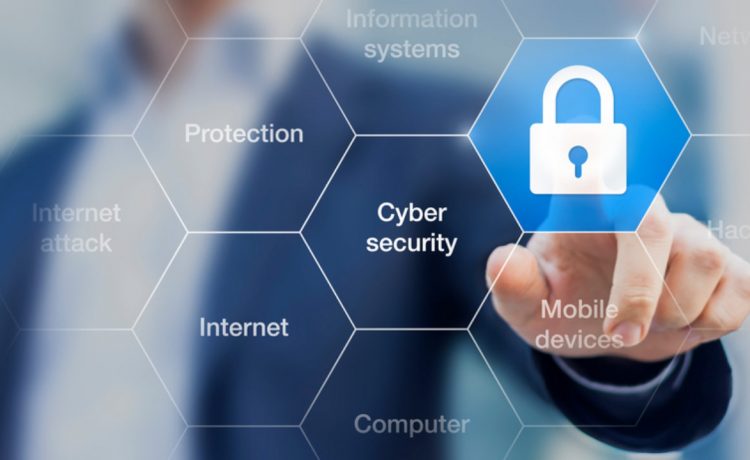Cybercrime Expanding Rapidly, What Are the Best Cybersecurity Practices?

In the next few years, cybercriminal activities will continue to grow rapidly. As a matter of fact, it is projected that by the end of this year, 2022, there will be more than 27.9 billion networked devices globally.
Businesses of every size will continue to face new dangers every day, with malware and phishing scams being the most popular ones. And both of these can turn out to be very devastating, most especially to unprotected business organizations.
This is a wake-up call, and it is high time business organizations understand cybercriminal threats and do everything possible, like using a threat hunting platform, to avoid a data breach.
Challenges of Cybersecurity
For effective cybersecurity, business organizations need to coordinate their efforts through the entire information system. Elements of cyber include the following:
- Endpoint security
- Application security
- Network security
- Cloud security
- Infrastructure and database security
- Identity management
- Data security
The Scale of Cybersecurity
Cybercrimes cost their victims more than $15.4 billion every year, and this is just in the US and UK, with more cash lost to romance fraud, investment fraud, and BEC (business email compromise) scams.
What’s more, this figure is just a portion of the total cost, according to experts at Sangfor Technologies. This is estimated to increase by another $6.3 billion this year, considering the costs cascading out of cybercriminal activities.
Especially newer and smaller businesses are attractive targets for cyber-attacks because they lack the right cybersecurity tools and infrastructure that more experienced and larger businesses have.
The Best Security Practices for Cyber Threats
Cybercrimes are undoubtedly among the fastest-growing and most common crimes globally. It continues to impact businesses in every industry.
Unless you want your business organization or company’s name to appear in the headlines because of a security breach, you have to be familiar with the most updated cybersecurity practices, like the following:
1. Handle Passwords Securely
Privileged accounts are basically gems for cyber criminals trying to gain access to valuable business information and sensitive data. Management of passwords is an important part of corporate security, particularly when it comes to PAM (privileged access management).
The largest online leak of passwords and emails happened last year. This database includes passwords from leaks of Bitcoin, Hotmail, Gmail, Yahoo, Netflix, and LinkedIn.
A perfect way to ascertain proper security is to consider using the best threat hunting platform and specialized tools, like PAM solutions and password vaults.
With this, you will be able to prevent unauthorized access to privileged accounts and, at the same time, simplify the management of passwords for workers.
2. Offer Security Training
Strengthening human elements is one of the effective cybersecurity practices to avoid cyber threats. Offering security training will allow your business organization to increase workers’ awareness when it comes to the security posture of the company.
You may train workers on how to detect attacks and phishing emails. This improves the odds of preventing attacks as they will be aware of the nature of the threat.
For effective employee training, consider starting with social engineering threats. These refer to simulated attacks, which resemble real security dangers.
They also help to detect every point of weakness in your workers and determine the kind of security training to consider.
3. Use MFA
Multi-factor authentication (MFA) can help to protect your data by adding another layer of security, allowing you to prevent hackers from authenticating.
Even if hackers have a hold on your passwords, they will need to cross the second and third factors of authentication, like the following:
- Voice recognition
- Fingerprint
- OTP
- Security code
4. Avoid Links, Unknown Emails, and Pop-ups
Be wary of phishing. Most phishers will try tricking you into clicking links, which may lead to security breaches.
Mostly, phishers prey on workers, hoping they open pop-up windows as well as other malicious links, which might have malware and viruses embedded in them.
With just a single click, you may allow hackers to infiltrate a computer network in your organization. This is why it is imperative to be careful of attachments and links in emails from every sender you don’t know.
5. Back-Up Your Data Regularly
Although it’s imperative to prevent as many threats as possible, hackers can still hack you irrespective of best practices and precautions.
Cybersecurity experts recommend backing up human resource files, accounts payable/receivable files, financial files, databases, electronic spreadsheets, and word processing documents, just to name a few.
Ensure to as well back every data kept on the cloud system. And make sure they are kept in separate locations in case of flood or fire. In order to ascertain you have the updated backup, should you need it, consider checking on it regularly.
6. Use Zero-Trust Security Strategies
Historically, business organizations used to implement perimeter-focused security strategies where threats are believed to root from the outside, and everyone in the perimeter is trusted.
But this trust came with excessive permissions and access granted to devices, applications, contractors, and workers. This form of security strategy is not effective at protecting against the latest cybersecurity threats because of the risks of account takeover attacks, insider threats, and failed defenses.
Unlike perimeter-based security strategies, a zero-trust security strategy is specifically designed to handle those risks by granting every device, application, and user the bare minimum access needed to perform their roles in the company.
By granting access to resources and limiting permission on the basis of case-by-case, a zero-trust security strategy helps to reduce the impacts of successful attacks against a business organization.
7. Use Firewall and Anti-Virus Protection
AV (anti-virus) protection software is one of the most prevalent solutions to deal with malicious attacks. It helps to block malware as well as virus from entering your devices and compromising your business data.
Using the best enterprise firewall from a trusted vendor is also vital in defending your organization’s data against all forms of malicious attacks. A good firewall can as well help to screen out the following:
- Viruses
- Hackers
- Other malicious activities
Concluding Remarks!
In the coming years, a business organization must take cybersecurity measures seriously as well as invest in them with enough resources.
Companies of every size must also have the best cybersecurity in-house expert, team, and consultant to monitor devices and quickly address vulnerabilities.








